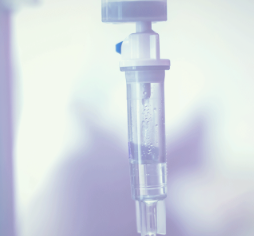Ketamine, Depression, Addiction: Is it a Cure, a Cause or a Vicious Cycle?

Last Updated on January 4, 2023 by Joseph Gut – thasso
December 22, 2022 – Are the many effects of ketamine clinically manageable? For treating clinicians and their patients receiving ketamine for quite a number of indications such as starting and maintaining general anesthesia, some forms of chronic pain relief, and some types of depression.
 Ketamine is a dissociative drug that causes a person to feel detached from reality. Although a low-dose infusion properly administered by a doctor may be therapeutic for some patients with depression, the recreational misuse of ketamine is very dangerous and poses many risks to the user. At higher doses ketamine can cause a broad variety of adverse effects that can include: delirium, amnesia, impaired motor function, high blood pressure, bladder pain, depression, slowed breathing, seizures, brain damage, and even death.
Ketamine is a dissociative drug that causes a person to feel detached from reality. Although a low-dose infusion properly administered by a doctor may be therapeutic for some patients with depression, the recreational misuse of ketamine is very dangerous and poses many risks to the user. At higher doses ketamine can cause a broad variety of adverse effects that can include: delirium, amnesia, impaired motor function, high blood pressure, bladder pain, depression, slowed breathing, seizures, brain damage, and even death.
 Ketamine and Depression
Ketamine and Depression
Some patients taking ketamine for whatever reasons may have difficulty coming out of their state of dissociation and may continue to feel disconnected from the world around them. Thus, ketamine may hinder judgment, attention, and thinking, and it can exacerbate existing mental health problems or newly create them as in the case of depression. Research shows that chronic users of ketamine tend to be more depressed than occasional users.
Research has shown that ketamine causes changes in brain neurochemistry. In this context, it is important to be aware of the dangers associated with taking ketamine while depressed and to seek help if you currently use ketamine and are finding it difficult to quit. It is the irony of any two-sided sword such as in the case of ketamine of being clinically very effective on one side and to carry hidden health dangers/risks on the other side (i.e., development of an addiction). In any case, patients should contact a substance abuse professional about the available treatment options that can help them overcome their ketamine addiction, including integrated treatment plans for individuals with a dual diagnosis. These programs can address both ketamine abuse and co-occurring depression, reducing the likelihood of relapse after treatment and making it much easier to stay on the path to sobriety. If patients have developed a psychological dependence for ketamine, a medically supervised detox at a treatment facility may be needed to help them safely and comfortably overcome any withdrawal symptoms.
Ketamine and the Opioid System
Research has shown that ketamine causes changes in brain neurochemistry. The molecular mechanisms are not yet very well understood; there is some recent evidence, however, that ketamine binds to and activates opioid receptors, causing the release of naturally occurring opioids in the body. If ketamine does indeed work through the  opioid system, chronic users can develop a tolerance to the drug and become dependent. For this reason, it is important that people receiving regular ketamine treatments for depression are monitored for any signs of opioid addiction.
opioid system, chronic users can develop a tolerance to the drug and become dependent. For this reason, it is important that people receiving regular ketamine treatments for depression are monitored for any signs of opioid addiction.
In the population, there existed a long-standing need for additional effective treatments for treatment-resistant depression in adults who have tried other antidepressant medicines but have not benefited from them (i.e., suffering from treatment-resistant depression) which in itself is a serious and possibly life-threatening condition. The American Food and Drug Administration (FDA) has recently approved Spravato (esketamine) nasal spray, in conjunction with an oral antidepressant, for the much needed treatment of treatment-resistant depression. Interestingly, esketamine is the s-enantiomer of ketamine, which is a mixture of two enantiomers (mirror image molecules).
Because of the urgent need for this kind of treatment, FDA granted this application regulatory Fast Track and Breakthrough Therapy designations. However, because the pharmacologically active ingredient (PAI) of Spravato (esketamine) is one form of ketamine, and because of possible effects of ketamine on depression and/or addiction in some patents, the FDA took several measures to control and ensure safe use of Spravato (esketamine) in the intended patient population.
For one, because of the risk of serious adverse outcomes resulting from sedation and dissociation caused by Spravato (esketamine) administration, and the potential for abuse and misuse of the drug, it is only available through a restricted distribution system, under a Risk Evaluation and Mitigation Strategy (REMS). Only patients with major depressive disorder who, despite trying at least two antidepressant treatments given at adequate doses for an adequate duration in the current episode, have not responded to treatment are considered to have treatment-resistant depression and are eligible for treatment.
Moreover, the Spravato (esketamine) labeling contains a Boxed Warning that cautions that patients are at risk for sedation and difficulty with attention, judgment and thinking (dissociation), abuse and misuse, and suicidal thoughts and behaviors after administration of the drug. Because of the risk of sedation and dissociation, patients must be monitored by a health care provider for at least two hours after receiving their Spravato (esketamine) dose. The REMS requires the prescriber and the patient to both sign a Patient Enrollment Form that clearly states that the patient understands they should make arrangements to safely leave the health care setting to get home and that the patient should not drive or use heavy machinery for the rest of the day on which they received the drug. Additionally, Spravato (esketamine) must be dispensed with a patient Medication Guide that outlines the drug’s uses and risks.
In addition, the patient self-administers Spravato (esketamine) nasal spray under the supervision of a health care provider in a certified doctor’s office or clinic, and the spray cannot be taken home. The health care provider will instruct the patient on how to operate the nasal spray device. During and after each use of the nasal spray device, the health care provider will check the patient and determine when the patient is ready to leave.
Apart fr0m its possible unwanted psychological effects, Spravato (esketamine) comes with an impressive long list of common side effects experienced by patients treated in the clinical trials such as disassociation, dizziness, nausea, sedation, vertigo, decreased feeling or sensitivity (hypoesthesia), anxiety, lethargy, increased blood pressure, vomiting and feeling drunk. Also, patients with unstable or poorly controlled hypertension or pre-existing aneurysmal vascular disorders may be at increased risk for adverse cardiovascular or cerebrovascular effects. Spravato (esketamine) may impair attention, judgment, thinking, reaction speed and motor skills. Patients should not drive or operate machinery until the next day after a restful sleep. Spravato (esketamine) may cause fetal harm and women of reproductive potential should consider pregnancy planning and prevention; women should not breastfeed while being treated.
Overall
It seems from all the gained knowledge from the application of ketamine to patients the question of above is still a valid one: Is ketamine a cure of or a cause for many conditions? Are some patients under ketamine even caught in some sort of a vicious cycle of benefits and serious risk?
See here a critical discussion by experts on ketamine and depression:
Disclaimer: The images and/or videos (if any) on this blog may be protected by copyright. All rights remain with the owner of these rights.


Leave a Reply
You must be logged in to post a comment.
Optional: Social Subscribe/Login